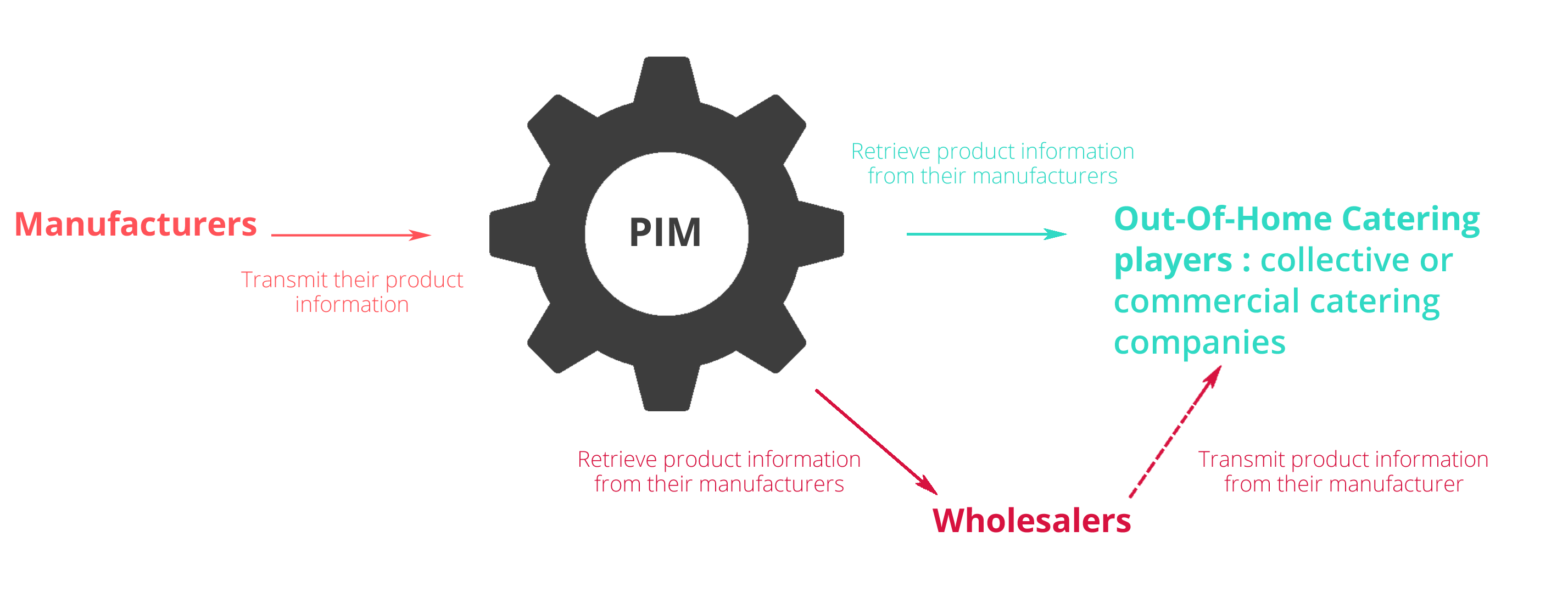Faced with the growing expectations of consumers and in order to comply with ever-changing regulations, players of the Out-Of-Home Catering market are required to provide their guests with quality product information. Product information should, on the one hand, be smoothly disseminated to facilitate cooperation between industry players and, on the other hand, remain reliable throughout the entire value chain.
It is in this spirit of transparency and reliability of information that the Out-Of-Home Catering sector is gradually acquiring a structure, opting for the digitization of product descriptions.
Digital product descriptions to serve Out-Of-Home Catering players
The digitization of product descriptions is a response to the challenges of the public and commercial catering sector, wholesalers, logistics service providers and also industrial suppliers to the sector. It is through a PIM (Product Information Management) platform that the digitization of product descriptions takes place. A PIM platform centralizes all the product descriptions and facilitates the management of information associated with the products.
Manufacturers selling products used by the Out-Of-Home Catering sector are able to digitally centralize the data relating to the products in their catalogue, with the aim of sharing them with their customers. Collective or commercial catering companies can collect product descriptions from their suppliers, reduce errors (ingredients, allergens, etc.) and guarantee the reliability of the information right down to the guests. Wholesalers and logistics service providers also find an optimization lever in using a PIM solution, as part of improving exchanges with the players in the ecosystem and optimizing logistics processes. It should be noted that a large number of players in the Out-Of-Home Catering sector have collaborated within a working group at GS1, around the digitization of product information, traceability and food safety. This working group has made it possible to standardize the content of Out-Of-Home Catering product descriptions while ensuring that they comply with EU Regulation 1169/2011, which requires transparency on foodstuffs. Standardized product descriptions hence contribute to making exchanges between the various Out-Of-Home Catering actors more smooth and reliable.
It should be noted that a large number of players in the Out-Of-Home Catering sector have collaborated within a working group at GS1, around the digitization of product information, traceability and food safety. This working group has made it possible to standardize the content of Out-Of-Home Catering product descriptions while ensuring that they comply with EU Regulation 1169/2011, which requires transparency on foodstuffs. Standardized product descriptions hence contribute to making exchanges between the various Out-Of-Home Catering actors more smooth and reliable.
Accelerate and make reliable the exchange of product information with GDSN
Exchanging product information digitally optimizes everyone's time. However, it is even more profitable to do so in a standardized manner via the GDSN network. Behind the four letters that make up this acronym lies a worldwide network for exchanging standardized – and therefore interoperable – data. The Global Data Synchronization Network is the world's largest product information network.
Benefits of GDSN:
• Share product information in real time
• Reduce the time and costs associated with managing one’s data
• Eliminate manual processing and reduce errors
• Facilitate and accelerate the introduction of new products on the market
• Enable consumer transparency
The use of a PIM solution undoubtedly represents a genuine performance lever. Saving time, consumer transparency, optimizing exchanges between partners, and so on – the advantages are numerous and benefit the entire value chain.


